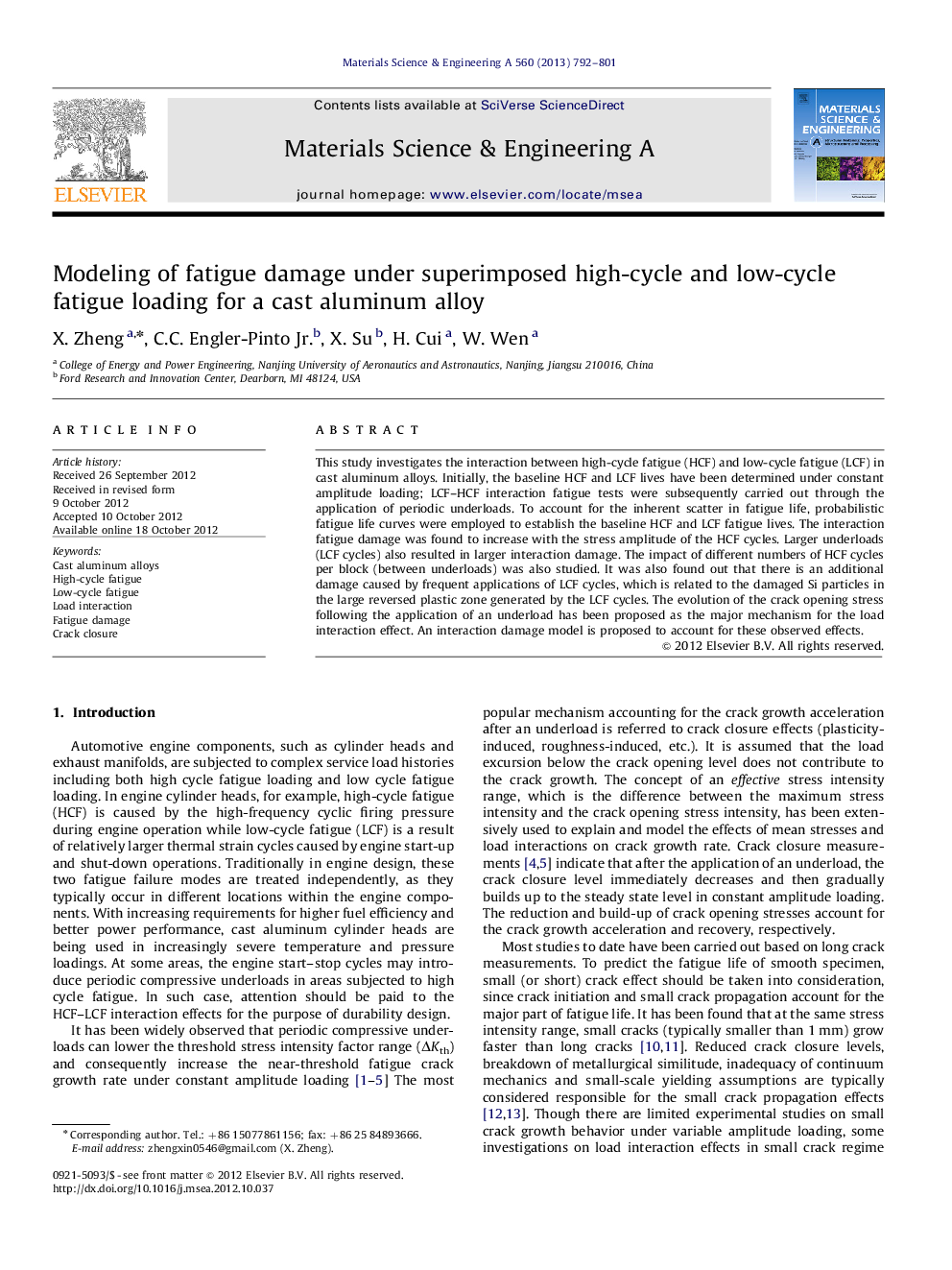| Article ID | Journal | Published Year | Pages | File Type |
|---|---|---|---|---|
| 7984297 | Materials Science and Engineering: A | 2013 | 10 Pages |
Abstract
This study investigates the interaction between high-cycle fatigue (HCF) and low-cycle fatigue (LCF) in cast aluminum alloys. Initially, the baseline HCF and LCF lives have been determined under constant amplitude loading; LCF-HCF interaction fatigue tests were subsequently carried out through the application of periodic underloads. To account for the inherent scatter in fatigue life, probabilistic fatigue life curves were employed to establish the baseline HCF and LCF fatigue lives. The interaction fatigue damage was found to increase with the stress amplitude of the HCF cycles. Larger underloads (LCF cycles) also resulted in larger interaction damage. The impact of different numbers of HCF cycles per block (between underloads) was also studied. It was also found out that there is an additional damage caused by frequent applications of LCF cycles, which is related to the damaged Si particles in the large reversed plastic zone generated by the LCF cycles. The evolution of the crack opening stress following the application of an underload has been proposed as the major mechanism for the load interaction effect. An interaction damage model is proposed to account for these observed effects.
Keywords
Related Topics
Physical Sciences and Engineering
Materials Science
Materials Science (General)
Authors
X. Zheng, C.C. Jr., X. Su, H. Cui, W. Wen,
